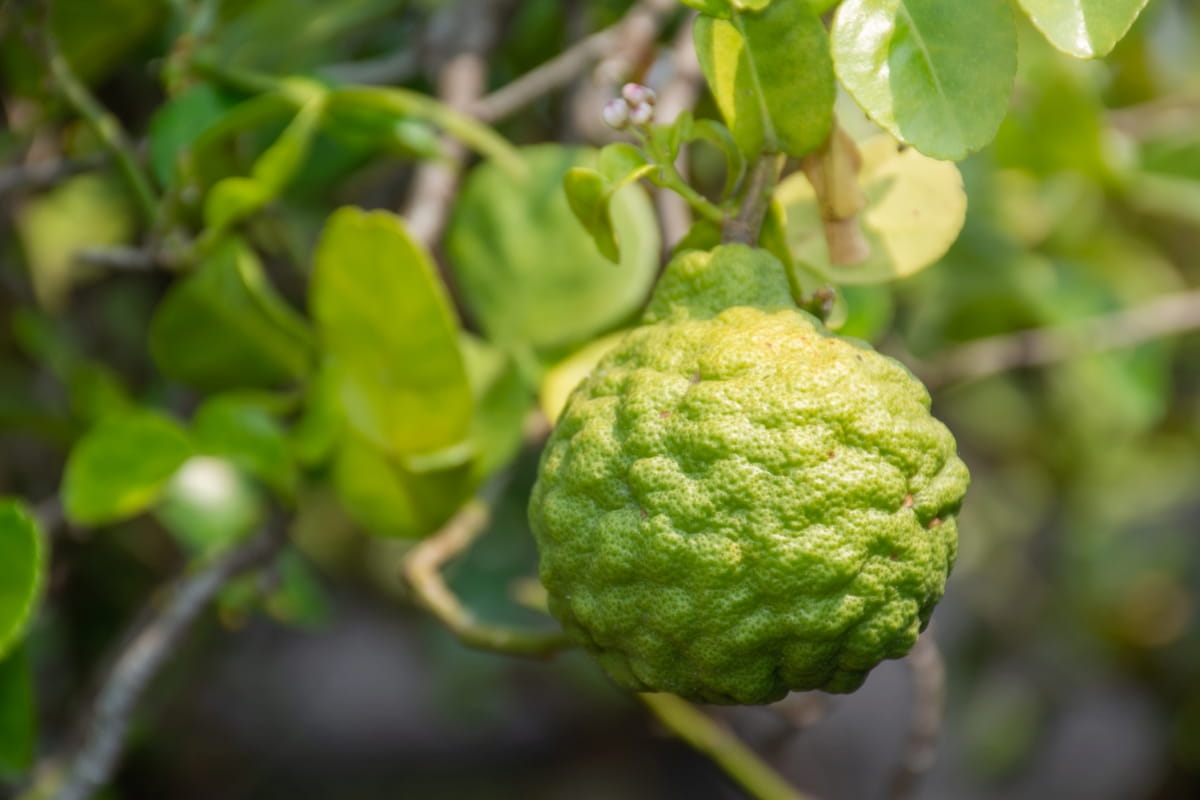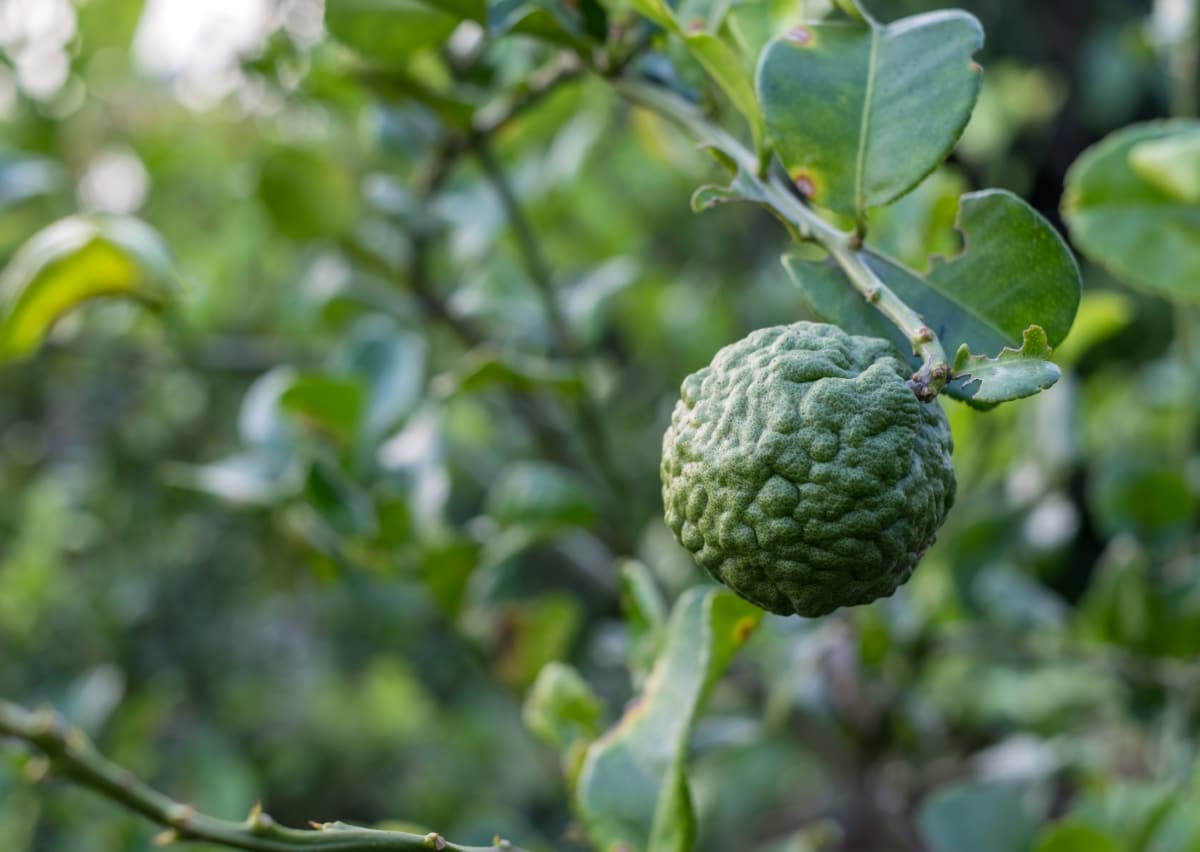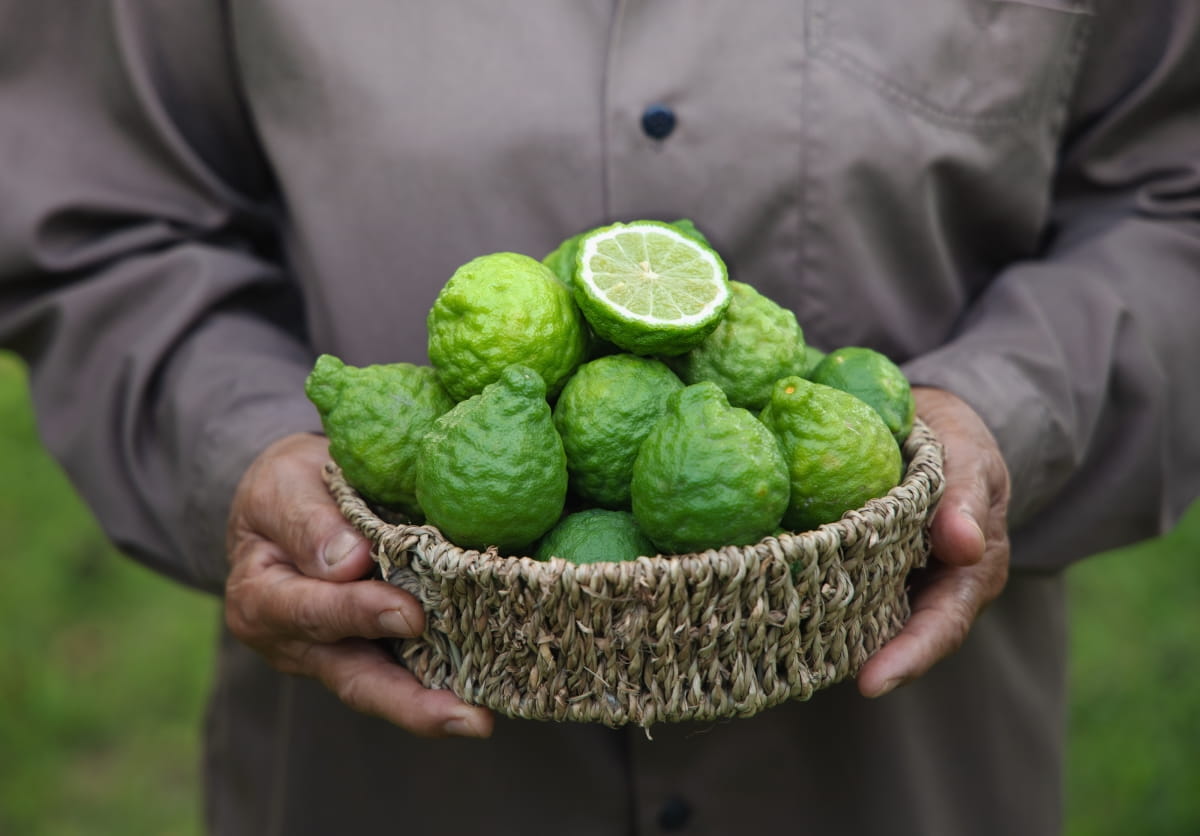The Kaffir lime tree, also known as the Makrut lime (Citrus hystrix), is a tropical citrus fruit tree that is prized for its aromatic leaves and distinctive double-lobed fruits. This tree type is native to Southeast Asia and is mostly cultivated for culinary and medicinal purposes. Growing a Kaffir lime tree can be a rewarding experience, providing you with fresh leaves and fruits to enhance the flavor of your dishes. Here’s a comprehensive guide on how to plant and care for a Kaffir lime tree.

How to Grow Makrut Lime Tree: A Step-By-Step Guide
Climate and Soil Requirements for Thriving Kaffir Lime Trees
Kaffir lime trees (Citrus hystrix) thrive in tropical and subtropical climates and kaffir lime tree temperature range between 15°C and 38°C. They are sensitive to cold and cannot tolerate frost. These trees require well-draining, slightly acidic to neutral soils with a pH range between 6.0 and 7.5.
A sandy loam or loamy soils are the best soil types for kaffir lime trees. The soil should be rich in organic matter and have good moisture retention without waterlogging. Planting in a location with adequate sunlight, preferably receiving at least 6-8 hours of sunlight, promotes healthy growth and robust fruit production.
Planting and Growing Kaffir Lime Trees
- Choose a sunny area with well-draining soil for planting Kaffir lime trees.
- The soil should be rich in organic matter and slightly acidic. Amend if necessary.
- Plant during the warmer months, avoiding frost periods.
- Dig a hole larger than the root ball’s size and place the tree in the center of the hole, ensuring it’s at the same depth as in the nursery container.
- Fill the hole with soil, compact gently, and water thoroughly.
Organic Fertilizers for Kaffir Lime Trees
Use well-decomposed compost as a rich source of nutrients, applying it around the tree’s drip line. Additionally, aged manure, such as a well-rotted cow or chicken manure, provides a mix of essential elements. Organic options like fish emulsion and seaweed extracts deliver micronutrients and promote soil microbial activity. Consider incorporating bone meal for a phosphorus boost, which is vital for flower and fruit development.
To maintain an acidic to neutral pH, use organic amendments like coffee grounds or citrus peels. Implement a mulching strategy with organic materials to conserve moisture and regulate soil temperature. Regularly monitor the tree’s response to fertilizer application, adjusting quantities based on growth and seasonal needs.
Pruning Kaffir Lime Trees
- Prune Kaffir lime trees during the dormancy, typically in late winter or early spring, to encourage vigorous growth.
- Trim any dead, damaged, or diseased branches to promote tree health and control the spread of infections.
- Prune to shape the tree and maintain a balanced canopy. This helps sunlight reach all parts of the tree, promoting uniform growth.
- Thin out crowded branches to good air circulation, reducing the risk of fungal diseases. This also allows for better penetration of sunlight.
- Manage the height by cutting back taller branches and keeping the tree at a desirable and manageable size for harvesting fruits and maintenance.
Watering Requirements For Kaffir Lime Trees
- Maintain consistent soil moisture to support optimal growth.
- Water deeply, reaching the root zone, rather than shallow watering. This encourages deep-root development.
- Water when the topsoil feels dry, typically every 7-10 days. Adjust the frequency based on climate and season.
- Water in the morning to allow excess moisture to dry during the day, preventing fungal issues.
- Apply mulch around the tree to retain soil moisture and regulate temperature.
- Ensure well-draining soil to prevent waterlogging, which can lead to root rot.
- Decrease watering in winter when the tree is in a dormant phase.
In case you missed it: Best Fertilizer for Finger Lime Tree: Organic, Liquid, Natural Homemade, and Schedule

How to Propagate Kaffir Lime Trees from Seeds and Cuttings
Growing Kaffir Lime Tree from Seeds
Start by removing the seeds from ripe Kaffir limes, cleaning them thoroughly, and allowing them to dry. Plant the Kaffir Lime seeds in a well-draining soil mix, covering them with about half an inch of soil. Consistently keep the soil moist and maintain a warm environment, as Kaffir lime seeds germinate best in temperatures around 21-24°C. Germination may take several weeks, and once the seedlings are large enough, they can be transplanted into containers or directly into the garden.
Growing Kaffir Lime Tree from Cuttings
Select a healthy branch with at least 6 inches of growth. Remove any leaves from the lower part of the cutting, leaving a few at the top. Dip the cut end in rooting hormone to promote root development and plant the cutting in a well-draining soil mix. Maintain the soil moisture consistently, and place the pot in a warm, shaded area. Rooting should occur in a few weeks, and once the cutting has established roots, it can be transplanted into a container or directly into the garden.
Common Diseases and Pests in Kaffir Lime Trees
Common diseases include citrus canker, which causes lesions on leaves and fruit, and root rot, leading to wilting and decline. Aphids, spider mites, and citrus leaf miners are prevalent pests that infest these trees. Combat these issues organically by regularly inspecting the tree for signs of infection or infestation.
For diseases, apply a mixture of neem oil and water, which possesses antifungal properties. Copper-based sprays can help control citrus canker. To deter pests, introduce natural predators like ladybugs and lacewings or use insecticidal soap and neem oil. Maintaining overall tree health through proper watering and fertilization practices also enhances resistance to diseases and pests. Regular pruning to remove affected foliage can further limit the spread of infections.
Harvesting and Using Kaffir Lime Leaves and Fruit
Harvesting Kaffir lime fruit involves plucking them when they reach maturity, typically around 6-9 months after flowering. Pick the leaves individually, choosing mature, dark green ones, and avoid taking more than one-third of the foliage to sustain the tree’s health. For fruits, harvest when they turn a vibrant green or yellowish color, depending on the variety, and feel firm to the touch.
In case you missed it: Finger Lime Care in Pots: Repotting, Watering, Fertilizing, Pruning, and Winter Care

Winter Care for Kaffir Lime Trees
Begin by applying a layer of organic mulch around the tree’s base to insulate the roots and retain soil moisture. Water the tree deeply before the onset of freezing temperatures to help prevent dehydration during winter. To shield the tree from frost, consider wrapping the trunk with burlap or frost cloth, providing a protective barrier against cold winds.
Additionally, use frost blankets or floating row covers to cover the entire tree when frost is predicted. If feasible, relocate potted Kaffir lime trees to a sheltered area or indoors during the coldest nights. Install stakes around the tree and drape the covering over them, ensuring that the fabric does not touch the foliage directly.
Techniques for Growing Kaffir Lime Trees in a Pot
- Choose a large container with good drainage, at least 15-20 gallons, to accommodate the tree’s roots.
- Use a high-quality potting soil mix with added organic matter to ensure proper drainage.
- Place the container in a sunny location, providing 6-8 hours of direct sunlight daily.
- Maintain the soil consistently moist, but avoid waterlogging. Water when the topsoil feels dry.
- Use a balanced, slow-release fertilizer during the growing season.
- Regularly prune to control size and shape, especially in a confined space.
- Move the container indoors or to a sheltered area during cold weather to protect it from frost.
- Apply mulch on the soil surface to conserve moisture and regulate temperature.
In case you missed it: Best Lemon Varieties to Grow in Your Garden

Conclusion
In conclusion, successfully cultivating a Kaffir lime tree involves mindful consideration of climate, soil, and watering needs. Whether planted in the ground or a container, providing optimal conditions, regular kaffir lime tree care and organic treatments ensure a thriving tree. With proper attention to detail, the journey from planting to care yields a rewarding experience and a bountiful supply of Kaffir lime goodness.
- Ultimate Guide to Ossabaw Island Hog: Breeding, Raising, Diet, and Care
- Ultimate Guide to Juliana Pig: Raising Facts, Size, Diet, Care, and Lifespan
- Raising Lleyn Sheep: Disadvantages, Price, Uses, Characteristics, and Care
- Ultimate Guide to Meishan Pig: Breed Facts, Breeding, Raising, and Care
- Ultimate Guide to Teacup Pigs: Raising, Diet, Lifespan, Cost, and Care
- Guide to Raising Poll Dorset Sheep: Facts, Profile, Characteristics, Uses, and Care
- Ultimate Guide to Bighorn Sheep: Characteristics, Diet, Lifespan, Breeding, and Lifecycle
- Ultimate Guide to Raising Katahdin Sheep: Farming Facts, Breed Profile, Uses, and Care
- Ultimate Guide to Raising Oreo Cows: Belted Galloways Farming Facts, Profile, Uses, and Care